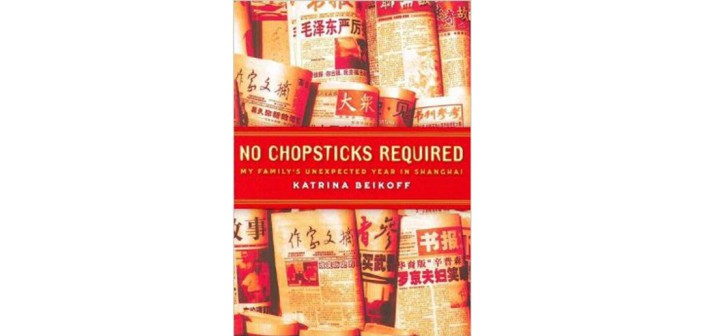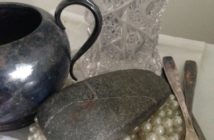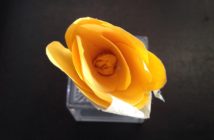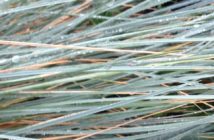The Art of Peter Siddell, Peter Siddell (with an essay by Professor Michael Dunn)
A Godwit Book, Random House, New Zealand 2011
This is the story of the artist, his family, his life and his art, giving the same kind of insight provided by the book on the life and work of Cliff Whiting noted here in February’s edition. It’s full of very readable text and a comprehensive selection of images tracing the development and style of Siddell’s work to the stylised, sharply angled building compilations of Auckland. It was fun recognising old Auckland houses and buildings moved and shifted by Siddell within his unique landscapes.
At Page 31 is “Toward the Bombay Hills” a 1993 Oil on Canvas from the Collection of Government House Wellington. When I first started work in “the Southside” there was no Manukau City and I would drive from my home to my office through and past open countryside and paddocks. All gone. And as this image shows – development out to the Bombays.
Included are a number of contemporary “traditional” landscapes – Golden Bay, Aoraki from the Coast, a beautiful view across Lake Taupo to the mountains. There are a number of images of the West Coast beaches around Auckland – places I have walked, swum and tried to climb. “Western Cliff” is based on the rock face of the Watchman rising above the Karekare stream – like the skin folds of an aging elephant. Siddell’s work may not be “real” but they totally capture the essence of the Auckland Region and wider New Zealand.
Two Centuries of New Zealand Landscape Art, Roger Blackley,
Auckland City Art Gallery 1990
At Page 8 Christopher Johnstone, Auckland City Art Gallery Director says “ This is an affordable non-specialist but nonetheless scholarly picture book on landscape art in New Zealand. It is not a history of New Zealand art as such, rather a visual introduction or companion”
It may not be a history of New Zealand art but it gives more than a flavour of early New Zealand through several eyes and also the amazing diversity of “style” of artists of similar times.
There are some photographs; Brian Brake’s March 1960 “Oriental Parade, Wellington” with its crowded sand – I looked really hard into this picture but I could not see any really “fat” people. Within the photograph my favourites images are the leopardskin-togged “Dad” lifting a small boy ovef his head and the cluster of people getting changed on the beach.
On the opposite page is “Burnt pine forest Canterbury”, 1955 John Johns – eerie photo realism and an insight into the effects of “A Modern Plague”.
The Black House, Peter May
Quercus, London 2011
“Tri rudan a thig gun irarraidh: an t-eagal, an t-eudach ‘s an gaol.
(Three things that come without asking: fear, love and jealousy) – a Gaelic proverb.
Essentially a “murder mystery” this book is fascinating because it’s set on the Isle of Lewis with an overlay of the previous and contemporary life and conditions of the island. There is the heartrending section of the small Gaelic-speaking boy starting school with “no English” and a teacher’s note being sent home to the family- no more Gaelic only English spoken at home!
Intertwined in the story is the traditional trip to An Sgeir to “harvest the guga” – gannet chicks – similar to what we know as “muttonbirding” and a privileged “rite of passage”. Historically the guga were a necessary food source in a hard and harsh landscape – now they are a coveted delicacy and the annual hunt is an environmental issue.
“An Sgeir lay along a line that ran approximately south-east to north-west. The towering spine of the rock dropped from its highest point in the south to a bleached curve of two-hundred foot cliffs at the north end, like a shoulder set against the prevailing weather of lashing gales and monstrous seas that rose out of the south-west to smash upon its stubborn gneiss.”
The descriptive writing brings you totally into the environment and the people. Nothing is unbelievable.
At the beginning of the book is a simple guide to the English pronunciation of the Gaelic names and words in the book – I spend a long time repeating my daughter’s name in Gaelic. This book is worth reading on so many levels.
No Chopsticks Required, My Family’s Unexpected Year in Shanghai
Katrina Beikoff, Finch Publishing, Australia 2011
This is an engaging but thought provoking read.
I left it on my dining room table and read it every time I sat down to eat.
The opening sentence is “Vegemite is really hard to remove from the Great Wall of China.” Two journalists and their two young children and their adventures and expriences. One of the major themes was the persistent difficulty in finding safe food and the difficulty shopping. The Sanlu melamine scandal is there and so is the rise of the “netizens” online citizens whose actions have unearthed scandals and behaviours authorities may not wish to deal with.
You could be tempted into thinking this book was a “light read” – it isn’t. It faces all the issues of the time head on. Andrew Bartlett, political and social commentator and former Democrats leader says “This is a book which is easy to read, but offers lots to learn. It isn’t just a travel memoir it’s an array of insights into culture, parenting, politics, media, epic tragedy and our shared humanity….”
The Woman who Walked into the Sea, Mark Douglas-Home
Sandstone Press Ltd Great Britain, 2013
This is one of the most fascinating murder mysteries I’ve ever read. It is the second in The Sea Detective series and is set in “…an invented coastal settlement in the north of Scotland.” The Sea Detective is just that, an oceanographer whose ability to calculate time, tide and movement enables him to track human bodies and “seaborne objects”. Again it’s multi-layered and comes totally to life as a twenty-six year mystery is unravelled.
The Rembrandt Affair, Daniel Silva
Penguin, Australia 2010
A Gabriel Allon Thriller an interesting read about the power of private online surveillance with an art history background and flavour. This was a “good read before sleep”.
Death Message, Mark Billingham
Little Brown Great Britain 2007
Totally engrossing and realistic crime fighting. Page 124 “Camden Market was one of the capital’s top tourist attractions; the fourth-biggest retailer in the country, according to some sources, with up to one hundred thousand people descending on the place very weekend”. Advice for Downtown Tauranga?
The Secret of Magic, Deborah Johnson
Amy Einhorn Books, New York, 2014
Post war injustice, brave opposition and use of “the law”. A fictional story based on fact. Facing hideous post WWII Southern Amercian racial attitudes and behaviours. As the great-great-grandaughter of a freed slave I found I could not read some parts of the violence of this book. The rustic cover and the title are no indication of the contents.
Tauranga City Libraries Book Club meets:
3rd Wednesday of every month of 2014 at the Tauranga City Library
10.30am to 11.30am and 5.30pm to 6.30pm
Papamoa Library Book Club meets:
3rd Wednesday of every month of 2014 at Papamoa Library
10.00am
CLICK HERE for more information
“Read your way around the World – April 16 is Scotland – novels, food, travel, nistory, memoir or DVD.





